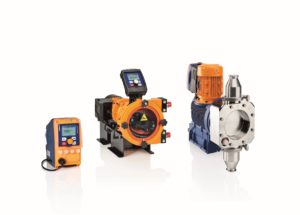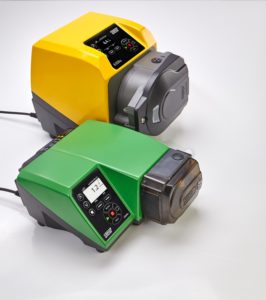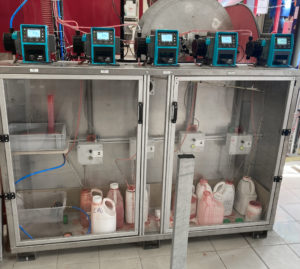Peristaltic Pump Clears The Way for Network Rail
When Network Rail looked for new ways of dealing with autumn leaf fall problems, they turned to Portec Rail Products (UK) Ltd to manufacture a trackside traction gel applicator that would break down the cellulose film generated from crushed leaves.
Watson-Marlow Bredel peristaltic pumps were specified as part of this project to handle the sand-based gel.
Specialists in supplying rail maintenance equipment, Portec Rail Products were approached by Network Rail to design a trackside applicator that could apply a substance called Sandite onto the head of the rail.
The pump is a critical component of the applicator, and so selecting one that could handle Sandite and the harsh environment was a priority. Portec Rail Products (UK) Ltd carried out trials with a number of pump types, such as impeller pumps. But these soon clogged, and were unable to cope with the sand slurry that forms part of Sandite. “Unlike other pumps, the Watson- Marlow 701R pumpheads could handle the fluid without difficulty. Traction control is a big issue in the autumn, particularly when braking and accelerating. Maintaining grip on the line is especially important when approaching and departing from a station, making total reliability from all components in the applicator essential”. Comments Chris Twigg, Manager at Portec Rail Products (UK) Ltd.
Previously, crushed leaf deposits on Network Rail’s lines had been dealt with by a special Sandite train. This would travel the length of the track, depositing the abrasive gel in known areas of low rail adhesion. On busy lines this method is not very suitable as the effect of the Sandite on the track is lost after a number of trains has passed over it. Using a trackside applicator, Sandite can be applied each time a train approaches.
The trackside applicator consists of a cabinet located five to six metres away from the line, which is linked to an induction sensor attached to the track. The sensor recognises an approaching train, and signals the cabinet to actuate the 701R peristaltic pump. The 701R pumphead draws Sandite from storage containers into the spreader that is clamped onto the side of the railhead. The gel then flows out of the spreader’s 6mm holes onto the track head to form a pool of liquid that breaks down the leaf material.
When asked why they had specified the use of Watson-Marlow pumpheads, Andy Scobie from Network Rail said: “We had previously used them on a similar application, and having experienced such good results we chose to use them again.”
Although the trackside gel application units are only used for ten weeks of the year, they play a vital role in keeping the countries trains running on time. Located in leafy areas and places with a history of low rail adhesion, they provide a simple solution to the familiar problem of delays associated with leaves on the track.
The Watson Marlow 701R pumphead has driven rollers to provide smooth, low pulse flows up to 2000 litres/hour at 360 rpm, and can accept tubes in five different sizes and seven materials to cope with a wide range of fluids.
For more information, please visit the Company’s web site.







